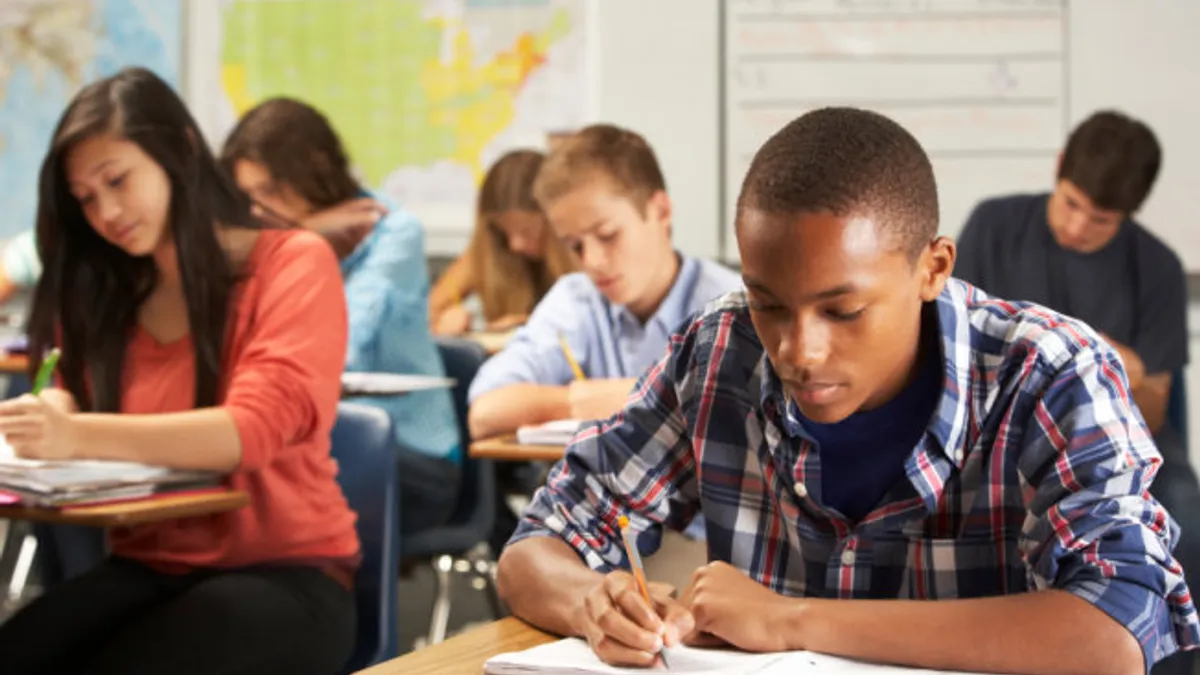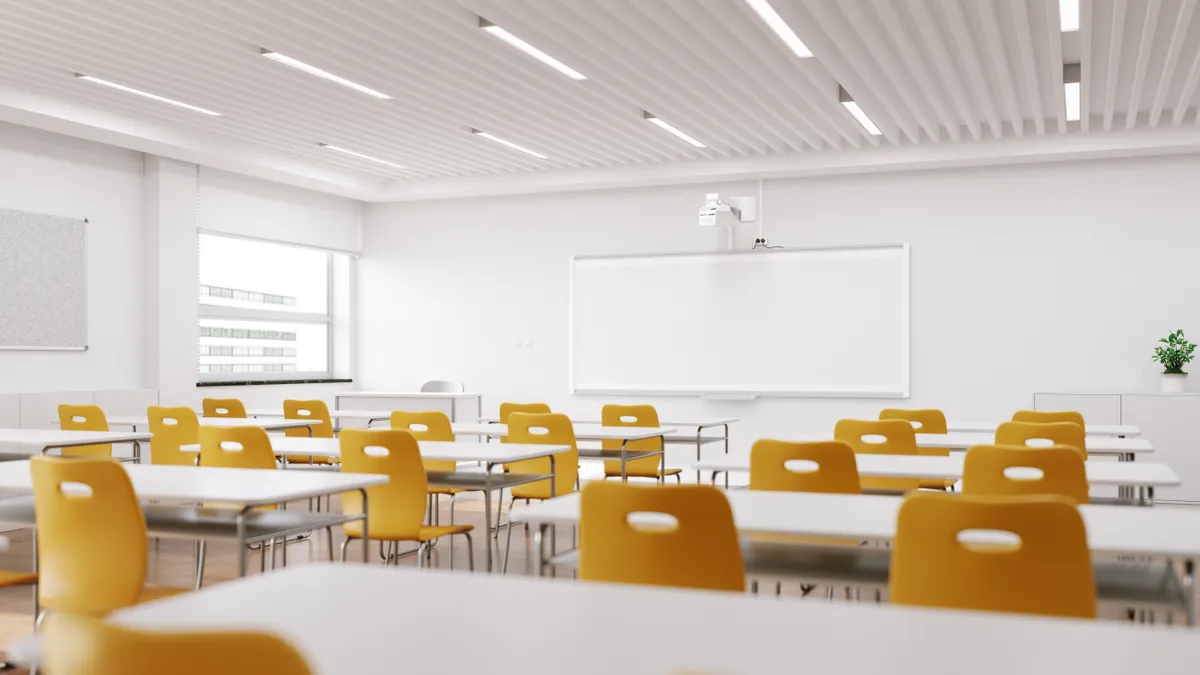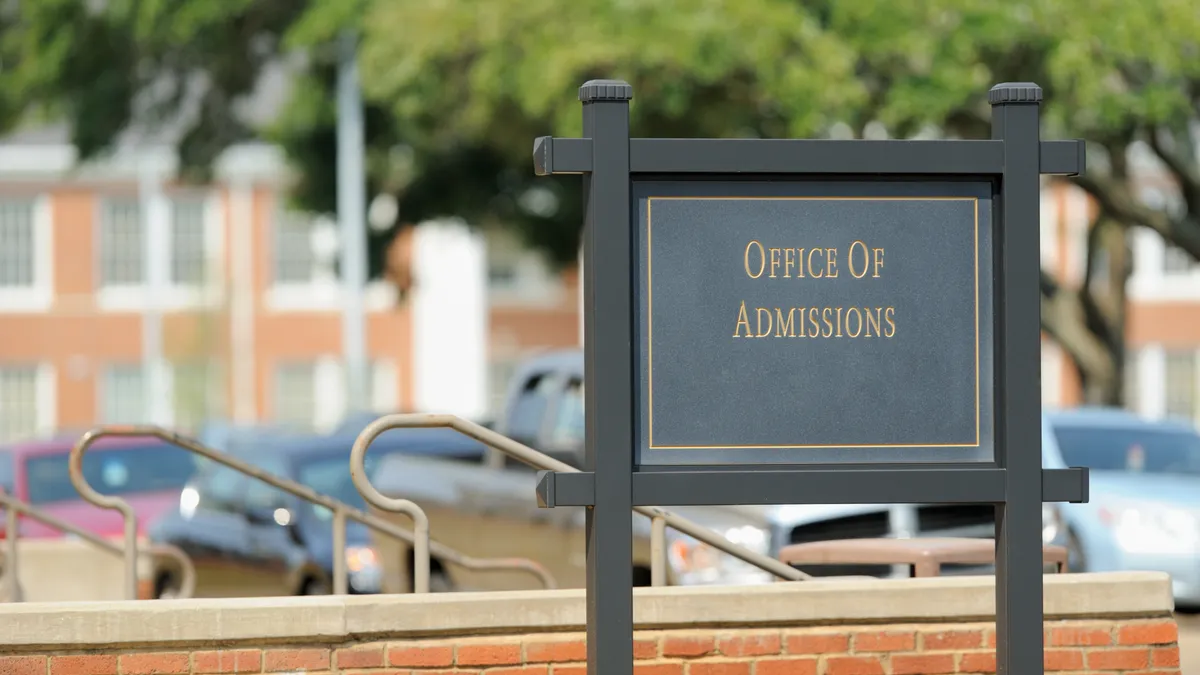Recent data collected by the Program for International Assessment (PISA) found the United States trailing international averages for student aptitude in mathematics, and placing just ahead in areas of science and reading. In total, students in the U.S. were outperformed by at least 14 countries in each area, and by 36 nations in math.
The test, organized by the French-based Organization for Economic Cooperation and Development and administered every three years for 15-year-old students in select school districts, serves as an international benchmark for success in teaching and learning. The United States’ performance on the test has slid over its last three iterations, and while it does not count for the impact of family poverty or reduction of appropriations to public education, it sets an agenda for the nation’s outlook on its strengths in key areas which dictate trends for industry and innovation.
Colleges and universities have taken notice of the declines, and in partnership with private foundations and government, are working to reverse course for the United States’ place as one of the world’s most educated countries.
Secondary systems seek out best practices, support
Tiffany Huitt is principal of the Science and Engineering Magnet High School (SEM) in Dallas, Texas and presides over the nation’s fourth-ranked high school in college readiness, and performance of students taking Advanced Placement curriculum, according to US News & World Report. She says that her school is currently in discussions with local universities and Dallas-based philanthropists to build upon a model of student training that meets standardized testing thresholds, while also targeting critical thinking and innovation among her more than 300 students.
“When I came in, I saw that we had a demographic of students and that there were schools which were outperforming us,” Huitt says. “Even though we were high-ranking, the metrics showed that there were some charter, some private and some public were outperforming us. So we did a case study to determine what they were doing to achieve high results. And ultimately what we developed was a notion that standards are a minimum base for what a student should know, and it doesn’t mean that it’s all we have to or can learn. So whatever the highest level of rigor we can provide to students, we do that from day one.”
Huitt says that incoming freshmen at SEM take upwards of four AP classes and are learning under a system which aggregates common standards required by advanced placement curriculum, ACT, SAT and other standardized tests and formulas of proficiency.
This approach, which also includes PISA standards, creates a foundation for reasonable expectations of student performance and makes the case to potential benefactors and college partners easier to make. The method is paying off, as SEM scored mean averages of 621 in math, 585 in science and 575 in reading; each exceeding averages produced by Singapore, the nation’s top scoring country by PISA testing results.
“People who are philanthropists typically want to help and to make a difference, and they just need people to reach out to them. Often, people are in awe by the work that we’re doing, so while they can’t put their name on a building, they want to be on the ground floor of something that is going to be great.”
Colleges, non-profits invested in secondary performance
Outcomes like those posted by SEM are the exact kind of results officials from the Wallace Foundation say they are hoping to reproduce nationwide through a $47 million partnership launched this summer between the Foundation and 24 colleges and universities throughout the country to develop new training modules for secondary school principals.
Officials with the foundation say that the five-year program will support dramatic changes to the way principals are trained, specifically in creating partnerships with local colleges and universities to redesign teacher training, to revitalize education management degree programs to better reflect real-world administrative duties, and to more effectively lobby lawmakers for sustained or increasing support of secondary education.
“Many university programs are looking for ways to raise the bar, and the time is ripe for states to consider broad reform of these programs, said Will Miller, president of The Wallace Foundation. “We hope this initiative will provide evidence about how to strengthen these programs, as a first step toward eventually creating a new, national evidence-based norm for how principals are prepared, particularly for schools with the greatest challenges.”
These principles are of particular emphasis in Louisiana, where the Southern University System has operated a laboratory school since 1922 in support of its teacher training degree programs.
The school, which boasts a 95% four-year graduation rate compared to the state average of 75%, and increased the percentage of students classified as 'struggling' to 'improving' from 83% to 95% over the last year, is a valuable resource for improving the chances of minority and low-income student access to higher education, while continuing high-impact training for future teachers.
“Despite a robust recruiting and admissions operation, it is increasingly clear that much more must be done to ensure that K-12 students are college-ready, whether they choose to attend college or not,” said Southern System Executive Vice-President of Academic Affairs and Provost M. Christopher Brown II. “We have expanded our dual enrollment offerings, hosting efforts with local mentoring programs, and launched emerging interface with regional charter school providers.”
“We cannot wait idly and see who applied and who gets accepted. We must help grow the kinds of students we want to admit.”





















